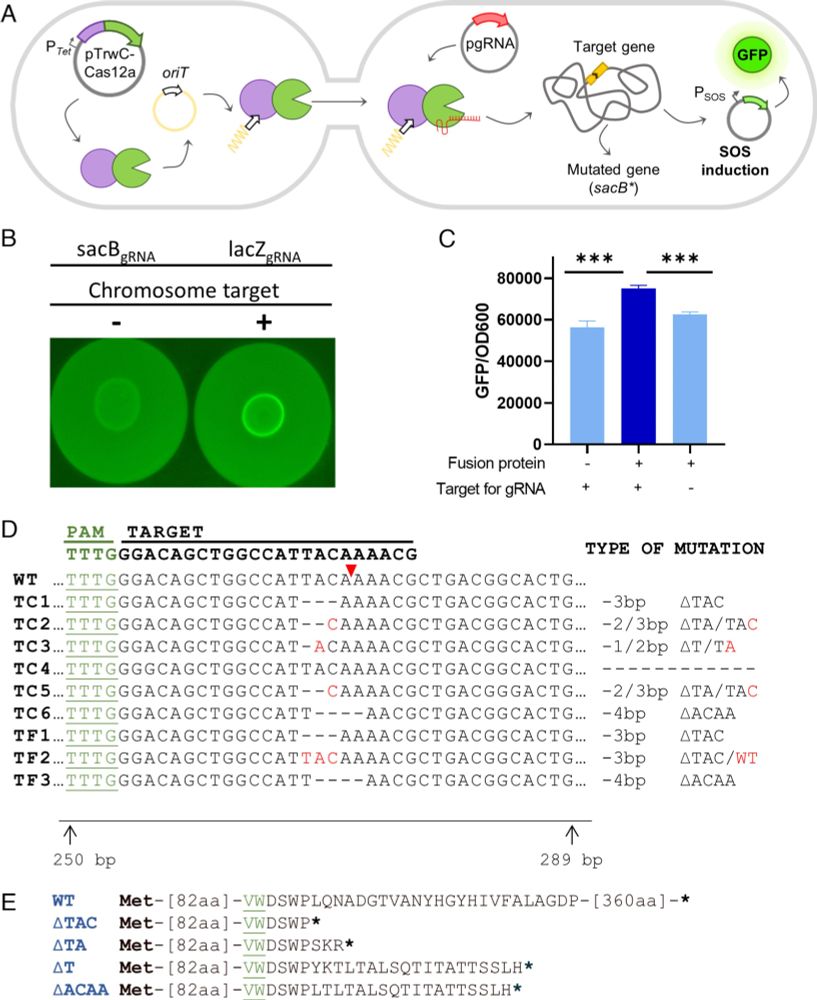T3SS
@t3sss.bsky.social
80 followers
220 following
97 posts
Manually curated posts on type III secretion system. A project managed by @e_sotog now at @ccg_unam
https://www.ccg.unam.mx/en/jose-eduardo-soto-guzman/
Posts
Media
Videos
Starter Packs
Reposted by T3SS
T3SS
@t3sss.bsky.social
· 5d

T3SS effector EseJ in Edwardsiella piscicida inhibits PANoptosis in macrophages - Communications Biology
Edwardsiella piscicida T3SS effector EseJ inhibits PANoptosis (pyroptosis, apoptosis and necroptosis) in murine macrophages by activating TAK1 and disrupting the formation of NLRP3-caspase-8-RIPK1 PANoptosome, thereby enhancing bacterial virulence.
www.nature.com
T3SS
@t3sss.bsky.social
· 8d

Injectisome assembly primes Pseudomonas aeruginosa for Type III secretion
Many Gram-negative pathogens, including Pseudomonas aeruginosa , use a Type III Secretion System (T3SS) to intoxicate eukaryotic cells. The T3SS is an important virulence factor linked to increased mo...
www.biorxiv.org
Reposted by T3SS
Reposted by T3SS
T3SS
@t3sss.bsky.social
· 13d

Assembly and dynamic regulation of the tip filament of the Bordetella type III secretion system injectisome | mBio
Bordetella bronchiseptica and Bordetella pertussis are two closely related respiratory pathogens that employ their T3SS injectisome
to deliver the BteA effector into host cells. In this study, we visu...
journals.asm.org
T3SS
@t3sss.bsky.social
· 14d

Mucus-derived glycans are inhibitory signals for Salmonella Typhimurium SPI-1-mediated invasion
Host mucins and synthetic glycopolypeptides block Salmonella virulence via glycan-mediated
suppression of Salmonella pathogenicity island 1 (SPI-1). In this study, Wheeler et
al. reveal that gastroint...
www.cell.com
T3SS
@t3sss.bsky.social
· 17d

Delivery of functional Cas:DNA nucleoprotein complexes into recipient bacteria through a type IV secretion system | PNAS
CRISPR-associated (Cas) endonucleases and their derivatives are widespread tools for
the targeted genetic modification of both prokaryotic and euka...
www.pnas.org
T3SS
@t3sss.bsky.social
· 17d

Structure-Based Identification of Salvianolic Acid B as an Inhibitor Targeting Salmonella InvC ATPase
Multidrug-resistant (MDR) Salmonella poses a significant global health threat. The
Type III Secretion System 1 (T3SS-1) and its ATPase InvC are crucial for virulence
and promising drug targets. Throug...
www.jbc.org
T3SS
@t3sss.bsky.social
· 23d

Proximity labelling reveals VPS13C as a regulator of Salmonella-containing vacuole fission
Author summary Salmonella enterica serovar Typhimurium (Salmonella) is a bacterium present in our food supply that can cause food poisoning. These bacteria can also cause severe disease in immunocompr...
dx.plos.org
T3SS
@t3sss.bsky.social
· 23d

Regulation of host immunity by a novel Legionella pneumophila E3 ubiquitin ligase
Author summary Successful pathogens have evolved virulence factors to co-opt the host ubiquitin network to counteract immunity or to redirect host cellular events to create a niche conductive for thei...
dx.plos.org
T3SS
@t3sss.bsky.social
· 23d

The type III secretion system translocases IpaC, SipC, and BipC are partially folded alpha helical proteins lacking in tertiary structures
The Type III secretion system (T3SS) is essential in the virulence of many bacterial pathogens that cause infectious diseases in humans. The T3SS consists of an injectisome that bacteria use to inject...
dx.plos.org
T3SS
@t3sss.bsky.social
· 28d

Shigella type-III secretion system effectors counteract the induction of host inflammation and cell death | The EMBO Journal
imageimageBacterial pathogens produce virulence effectors targeting the innate immune signaling of host cells, which activate alternative, “effector-triggered immunity” mechanisms in response. This study shows how Shigella flexneri uses its type-...
www.embopress.org
T3SS
@t3sss.bsky.social
· 29d

The accessory type III secretion system effectors collectively shape intestinal inflammatory infection outcomes
Injection of effectors via a type III secretion system (T3SS) is an infection strategy shared by various Gram-negative bacterial pathogens, many infecting mucosal surfaces. While individual T3SS ef...
www.tandfonline.com
T3SS
@t3sss.bsky.social
· 29d

Engineering non-pathogenic bacteria for auto-transporter-driven secretion of functional interferon
In recent years, various strategies have been developed to enable the oral administration of protein-based drugs (biologics) with the aim of overcoming the degradation and inactivation of these dru...
www.tandfonline.com
T3SS
@t3sss.bsky.social
· Sep 5

Single-cell analysis of genetically minimized Salmonella reveals effector gene cooperation in vivo - Nature Microbiology
A minimal effector subset enables Salmonella Typhimurium to overcome bottlenecks regulated by the early innate immune response and establish infection within a CD62L+ monocyte niche in the spleen.
www.nature.com
Reposted by T3SS
T3SS
@t3sss.bsky.social
· Aug 30

Macrophages orchestrate elimination of Shigella from the intestinal epithelial cell niche via TLR-induced IL-12 and IFN-γ
Eislmayr et al. reveal a previously unrecognized role of macrophages in controlling
the intracellular pathogen Shigella. By sensing bacteria and triggering IFN-γ production,
macrophages, not neutrophi...
www.cell.com
T3SS
@t3sss.bsky.social
· Aug 28

Interplay between SpaO variants shapes the architecture of the Salmonella type III secretion sorting platform
Salmonella enterica utilizes a virulence-associated type III secretion system (T3SS) to inject bacterial effectors directly into host cells. Central to this machinery is the sorting platform (SP), a c...
www.biorxiv.org
T3SS
@t3sss.bsky.social
· Aug 27

Combinatorial effects of tryptophan derivatives serotonin and indole on virulence modulation of enteric pathogens | mBio
Pathogens sense a plethora of signals within the gut to successfully establish colonization
by precise regulation of virulence gene expression within the right niche. Our study
shows that it is crucia...
journals.asm.org
T3SS
@t3sss.bsky.social
· Aug 25

The predicted sorting platform dynamically associates with the type III secretion system from Xanthomonas euvesicatoria in response to the external pH - BMC Microbiology
The Gram-negative bacterium Xanthomonas euvesicatoria (Xe) causes bacterial spot disease in pepper and tomato plants, and employs a type III secretion (T3S) system to translocate effector proteins int...
bmcmicrobiol.biomedcentral.com







